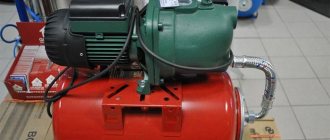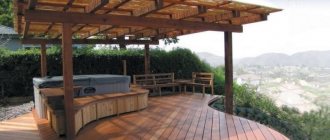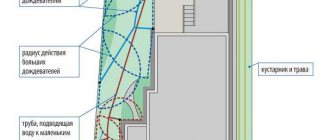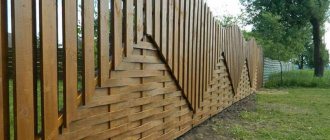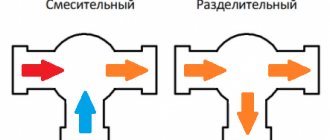Septic tank without pumping - what is it?
Models of autonomous sewers on the market can be divided into storage systems and treatment stations. The latter are designed in such a way that they allow wastewater to be purified so much that it can be discharged onto the ground or pumped into a drainage well for further treatment. The process is fully automated and does not require third-party intervention. For the owner, this means that there is no need to control the filling of the container, regularly pay for the services of a vacuum cleaner, or worry about an unpleasant odor in the area.
In turn, septic tanks without pumping are divided into:
1) Non-volatile septic tanks without pumping
- These are the simplest installations without pumping, which are distinguished by the absence of any electronic systems. The wastewater is moved inside the station using the overflow method, and there is no aerobic stage in the treatment process. Without oxidation, which ensures active biodegradation, it is impossible to perform high-quality wastewater treatment. Therefore, they are also called sewer water clarification or sedimentation systems.
After completing all stages of purification, the system will clarify the water by 45-55%. There are models containing special activators and chemical reagents that allow the output to be 55-70% pure water. In both cases, federal law prohibits the discharge of such water onto the ground, so the sewer system must be equipped with a drainage well in which additional treatment will take place.
2) Complete biological treatment or bioseptic systems
– modern sewerage complexes, which, due to their design and multi-stage cleaning, guarantee 95-98% clarified water. It can be used for irrigation, discharged onto the ground into gutters, etc. Such models are energy-dependent, since they contain air compressor units, however, the daily energy consumption of such a system is even less than that of the most economical refrigerators.
Unlike energy-independent systems, where accumulated sludge is a waste that must be removed, only activated sludge remains in a bioseptic tank. Its feature is its absolute environmental safety, so you can use it as fertilizer in the garden.
Obviously, among the two types of septic tanks without pumping, complete biological treatment stations are more preferable. When choosing an unpretentious and reliable system, bioseptic tanks are in the lead by a wide margin, since their normal operation requires only electricity. In order for the sedimentation tank to provide its performance, it is necessary to control the type of wastewater, it is prohibited to exaggerate a one-time salvo discharge, and the mandatory presence of a drainage well limits the use of systems at high groundwater levels. For these reasons, next we will consider the features and design of septic tanks for complete biological treatment.
Calculation of septic tank volume
In general, I did not go much into the theoretical part of calculating a septic tank; I only read some articles by A. Ratnikov, a specialist in the disposal of liquid waste and water supply of country cottages.
According to standards, the volume of a septic tank should be equal to three times the daily influx of wastewater . During this period, bacteria must process this volume of sewage.
The daily norm for one person is 200 liters . From these numbers the entire calculation of the volume of the septic tank is made.
Those. if you have a family of 4 people , calculate the volume of the septic tank: 4*200*3 = 2400 liters (2.4 m3) .
Therefore, when using, for example, well rings (Ks 15-9) (diameter - 1.5 m, volume - 1.59 m3), you will need two such rings when building a single-chamber septic tank . Keep in mind that the volume of the rings is “dirty”, that is, you will not be able to fully use the volume of the upper ring, since it will not be completely filled with waste.
Much also depends on the filtering capacity of your soil and the groundwater level. Septic tanks for dachas with a high groundwater level (GWL) are preferably built at shallow depths and should have a shallow filter well, preferably up to the surface of the groundwater.
If the soil is mainly clay, you need to increase the area of the filtration well several times, because Clay filters water through itself very poorly.
The working depth of the septic tank, equal to the distance from the wastewater level in the septic tank to its bottom, must be at least 1.2 m, width 0.75 m (or diameter 1 m for septic tanks with a round plan). The maximum working depth of wastewater in a septic tank should not exceed 2.5 m.
Design and principle of operation
The internal structure of bioseptic tanks depends on the specific model, but each such station contains:
- The receiving chamber
is the primary treatment compartment where all wastewater enters. Here, water accumulates for further pumping, calms down, allowing fat and other suspended particles to float to the surface, and the hardest components to settle to the bottom. For greater effect, special separators are installed at the entrance to the chamber, which crush large particles. - An aeration tank
is a mandatory compartment into which compressors pump air. The system nozzles are located on the sides of the chamber and at the bottom. This comprehensive saturation of water with oxygen activates the oxidation process. This is the main stage of decomposition in a bioseptic tank, as it stimulates the breakdown of wastewater. The bottom of the aeration tank is filled with activated sludge. It is formed as a result of oxidation and precipitation of waste particles. This material contains colonies of microorganisms that enable anaerobic decomposition. Since the oxygen saturation system works alternately, the water is first oxidized and mixed with sludge at the same time. As soon as the air supply stops, microorganisms thoroughly mixed with water begin airless decomposition. - Settlement tank
- the wastewater pumped from the aeration tank contains a lot of sludge, and this chamber exists for its sedimentation. - Clarifier
is another settling tank that finally clarifies the water. - Storage compartment (optional)
– a chamber for collecting clean water, which is equipped with models with forced discharge.
These four compartments form the basis of the active biodegradation system. One pass through all systems is not enough, so some manufacturers cycle the cleaning process, passing wastewater through all chambers several times. Other stations increase the number of chambers and may consist of 3-5 settling tanks and several aeration tanks.
To guarantee 98% water purification, some manufacturers provide special active loads and disinfection systems. Their task is to rid the water of phosphate and nitrogen compounds and eliminate residual microflora.
Volatile septic tanks
They are also called autonomous sewers; they are ideal for year-round living in a private home, allowing you not to worry about pumping or additional wastewater treatment fields.
These septic tanks are distinguished by 98% wastewater treatment, which makes it possible to safely discharge it into ditches and reservoirs, as well as use it as process water on the site. They run on household electricity and require uninterrupted power. There are free-floating bacteria in the system that destroy organic compounds, but you should remember that they die if any chemical gets into the sewer system.
Among stations of similar design, the Topas and Unilos systems stand out, and we will consider them in more detail.
Topas station
This is the first septic tank of this type produced on the Russian market, which appeared in 2001 and began to use bacterial wastewater treatment. The entire system is designed for 2 levels of purification, purification of organic waste with bacteria, and additional purification with fine-bubble aeration, which cleans technical wastewater with artificial air supply.
Topas 8 station
This system has many options, you can choose the most suitable one according to the following parameters:
- The number of people living in a private house, there are options from four to ten, please note that it is always better to choose a modification based on plus one to the existing residents, and it is also worth remembering about arriving guests and sometimes an expanding family.
- Depending on the depth of the pipe that will remove wastewater from the site.
- There are systems with one compressor and two, distinguished by the prefix “C” in the name.
- The presence of a drainage pump is indicated by the prefix “Pr” in the name; you will need this option if the groundwater level is high in your area.
- There are installation options for small cottage villages where from 50 to 150 people live.
This option of autonomous sewerage has quite a lot of advantages, here are some of them:
- A large number of models for all types of private houses and even cottage villages, taking into account possible high groundwater levels, for different soil options, and so on
- High strength, eliminating the possibility of breakage from compression by soil.
- Simple and convenient maintenance
- Quiet operation
- Wastewater treatment reaches 98% and allows water to be discharged into the soil, the nearest body of water or a drainage ditch without constructing additional structures.
The disadvantages include such nuances as:
- Fairly high cost
- Electricity consumption is 1.3-1.5 kilowatts per day, it depends on the specific model and how actively it works.
- The need to ensure that chemicals do not get into the sewer, which will kill bacteria, rendering the septic tank inoperable.
| Model | Number of users | Dimensions (LxWxH), mm | Electrical energy consumption | Productivity, l/day | Link to reviews |
| 4 | 4 | 950x970x2500 | 1.5 kW*day | 800 | Go to reviews |
| 5 | 5 | 1150x1170x2500 | 1.5 kW*day | 1000 | Go to reviews |
| 6 | 6 | 1150x1170x2550 | 1.5 kW*day | 1150 | Go to reviews |
| 8 | 8 | 1630x1170x2500 | 1.5 kW*day | 1500 | Go to reviews |
| 9 | 9 | 1630x1170x2550 | 1.5 kW*day | 1700 | Go to reviews |
Advantages of septic tanks without pumping
If you compare bioseptic tanks with cesspools, you will get the following advantages:
- The bioseptic complies with the law of the Russian Federation, SanPin standards and SNIPs. For the use of a classic cesspool, administrative and criminal liability is provided.
- The factory model is completely sealed and does not contaminate groundwater.
- The septic tank has no odor.
- The treatment station does not need to be moved after 10-20 years.
- When installed correctly, the septic tank is not afraid of floating water and can be used in close proximity to groundwater.
And if you compare a septic tank without pumping with a storage option, then the following stand out as its advantages:
- The cost of electricity for a month of operation of an air compressor is 100 - 300 rubles, calling a vacuum cleaner costs several thousand rubles.
- A local treatment plant (LTP) can operate for up to 6 months without the need to inspect its internal condition.
- Does not emit unpleasant odors.
- Stations with emergency systems notify you of problems with visual signals or SMS messages to your number.
- VOCs are suitable for installation in water protection areas.
Types of septic tanks for cottages and country houses
Whatever material the septic tank consists of, it will be made in the form of a certain functional element. Sewage for a home is selected depending on the typical properties of the septic tank.
Cumulative type
They are installed in isolation, after which they connect the sewer pipe leading from the house (a pipe layout for sewerage in a private house is proposed in the article).
Since the septic tank does not have a drain for waste, it will accumulate inside. The difference from a cesspool is its tightness. Water does not penetrate into the ground, which means there is no pollution.
The most inexpensive and simplest are septic tanks for storage.
Important! The cost of septic tanks depends on the material and dimensions of the product, but in any case it is comparable to other tanks of a similar type.
Modern storage septic tanks are plastic barrels. Previously, instead of them, reinforced concrete rings were placed on a concrete bottom.
Since there is nowhere for the water to go, it remains inside the container, which is why it quickly fills up. This is the main inconvenience. If there are many people living in a house, you will have to call a sewer truck every week or even more often, which is fraught with high costs (read the article about pumping and cleaning cesspools and septic tanks).
Some use fecal pumps for self-pumping, but then you need a place for drainage, because the water will not settle, and the corresponding amber will be provided for a long time.
A plastic septic tank of this type with a volume of 2 cubic meters costs 25,000 rubles on average.
Storage septic tank with drainage system
The cost of such a sewer system will differ from the previous one due to the additional equipment installed.
When filling the main container, the solid part of the wastewater is separated from the liquid and settles at the bottom. Water occupies the middle layers.
A drain pipe is built into the container body, bent inside towards the bottom so that the surface crust does not interfere with drainage. When filled, water flows into the pipe and flows further. In the simplest systems, the exit leads to ditches.
Septic tank with drain pipe
The settled water has already been slightly purified. The installation can be connected to an infiltrator or filtration field, which is one or a network of pipes laid on a drainage pad made of stone.
There are holes drilled in the bottom of the pipes through which water seeps into the ground. To prevent them from clogging, a filter is installed at the entrance to the pipe.
There is another option - install a barrel without a bottom on a drainage base. Until the bottom silts up, the water will go into the ground, and then the container will be sealed and will fill as quickly as a sealed storage septic tank.
Maintenance of septic tanks without pumping
Septic tank maintenance can be either periodic or unscheduled. During normal operation of all systems, a general inspection of the condition of the system, washing of the large particle filter and hair catcher are carried out once a quarter. Complex work is carried out once every 6 months for permanent residence and once every 12 months for non-permanent residence. Once every 2-3 years, the station is completely updated with pumping out all contents, disinfection and filling with new bacteria and loads.
Complex work is carried out in the following order:
1) While the aerator is operating, water is taken from the aeration tank into a transparent container with a volume of 5-10 liters.
2) The station is disconnected from the network.
3) While the water is settling, the contents and sludge are pumped out from the sludge settling tank and the receiving chamber. If there is a large amount of non-recyclable garbage, it is first removed by catching it from the compartment.
4) The hair catcher and large fraction filter are dismantled and washed with water pressure or with a brush. If necessary, the airlift is dismantled and also washed.
5) Plaque on the walls of the emptied chambers is removed, and the remains are pumped out from the bottom.
6) The condition of the sample is checked. If the sediment level is 25% or more of the water volume, then it is necessary to pump out part of the activated sludge. To do this, a layer of water is pumped out, and when reaching the sludge layer, half of its contents are pumped out or removed.
7) Starting from the aeration tank, the station is filled with water to the operating level and restarted.
This completes the main system maintenance work, however, do not forget about the features of your particular model. For example, complexes with loads that absorb phosphate impurities must be replenished with the active substance every 4-7 months. Plus, sludge cannot be pumped out of compartments with such loads.
Modern standard
Don’t want to have problems with sewerage in your summer cottage or in a private house? Make a choice in favor of septic tanks for your home from the Eurolos company, the price of which will pleasantly surprise you.
Eurolos Eco
Anaerobic non-volatile septic tank
39,000
rubles
Price of a septic tank
Description
A non-volatile septic tank with a simple structure, suitable for sandy soils with low groundwater levels.
Main characteristics
- From 2 people
- One bathroom and two taps
- Production up to 0.6m3 per day
Septic tanks Udacha and EKO are completely energy-independent stations that will provide the level of comfort necessary for country houses during seasonal living. However, be careful, such septic tanks require the installation of systems for post-treatment of wastewater with soil, for example, the installation of drainage elements or the construction of filtration fields.
Pump + ejector Patent No. 166595
Eurolos Bio
Local wastewater treatment plant
68,500
rubles
Station price
Description
Autonomous pumping station for the treatment of domestic wastewater for a suburban area with seasonal or permanent residence.
Main characteristics
- Does not require wastewater treatment
- Family of 2 people
- 1 bathroom, 2 taps and shower
Based on Eurolos BIO and PRO septic tanks, it is possible to build a full-fledged autonomous sewer system in a private house, which does not require the construction of a filtration zone for additional wastewater treatment. They are perfect for a private country house with both seasonal and permanent residence.
How to choose a septic tank without pumping?
When purchasing a septic tank, in order to choose the model that is right for you, you need to pay attention to a number of its characteristics. In descending order, the most important of them are:
- Soil composition
- the choice of a septic tank begins with the quality of your site. The fact is that if you live on clay/chernozem with deep underground water, then the choice of station is limited only by your desire. As soon as we encounter moving soils, we need to choose a reinforced structure with developed stiffeners. - Groundwater level
- a nearby aquifer should be considered separately. Here, problems can arise already at the installation stage, when it is necessary to drain the pit for the location of the station. But simply burying it in the ground is not enough. It is necessary to independently provide for securing the housing in the ground. To do this, a reinforced concrete slab is placed at the bottom and the body is pulled to it, or the pit is filled with sand and cement, making the septic tank heavier. As an alternative to such solutions, you can choose a septic tank that has already been prepared for such conditions, for example “Tver”. - The type of water discharge
is forced for close groundwater, gravity - for all other cases. - Productivity
is the volume of daily water processing. For example, a station processing 1 m3 of wastewater per day is suitable for permanent residence of 4-5 people, at the rate of 200-250 liters per person per day. It is always better to take in reserve, taking into account possible guests and additions to the family. - The number of connected “points”
- for each septic tank, the manufacturer indicates the volume of salvo discharge. This is an indicator of the maximum amount of water drained at a time that the septic tank will process without deteriorating the quality of cleaning or breakdowns. Some models survive drainage from the bathtub, sink, toilet and washing machine at the same time, others “tolerate” only showers and sinks and toilets. - Type of wastewater discharged
- good septic tanks without pumping can treat any wastewater, except discharges from chemical plants.
Which septic tank without pumping should I choose?
All types of septic tanks cope with any wastewater, except for chemical discharges. The choice of design depends on several factors:
- The forced type of water discharge is used when the aquifer is close; in other cases, the gravity type is suitable.
- For all septic tanks, the manufacturer indicates the volume of salvo discharge. The indicator indicates the amount of water discharged at a time that the septic tank will process without breaking down or reducing quality.
- The performance parameter indicates the entire volume of discharges per day that the system is capable of processing.
- On moving soils, reinforced structures with stiffeners should be chosen.
When groundwater is close, it becomes necessary to drain the pit. It is recommended to select stations adapted for such conditions.
Aeration units
Septic tanks with aeration are hybrid installations. They have the following features:
- The design of the treatment plant is divided into chambers. Liquids move through pipes in a standard manner.
- Forced aeration is carried out using a compressor. Favorable conditions are created inside the structure for the proliferation of aerobic and anaerobic bacteria.
Aeration unit for septic tank.
Moving through the chambers, the liquid is further purified by microorganisms, which increases the efficiency of the septic tank.
In some cases, the use of aeration units makes it possible to abandon the arrangement of a filtration field and ground purification, because High quality processing takes place inside the containers. In some models, water after leaving the septic tank can be used to water plants.
With high productivity, the systems are equipped with an ultraviolet disinfection mechanism, and drainage is arranged into the nearest body of water.
Anaerobic septic tank Eurolos Eco
The non-volatile septic tank Eurolos Eco, produced in Russia, is a local facility for treating flow-type wastewater for a private home.
Externally, the design is a cylindrical container made of monolithic polypropylene. Due to its light weight, transportation and installation do not require the use of special equipment. Stiffening ribs are provided inside the body so that the structure can withstand soil pressure. Device Features:
- The container is divided by ribs into 3 compartments. Overflows have a special shape and hatches for technological purposes, inlet and outlet openings.
- Large particles settle in the first compartment.
- In the second chamber, biotreatment of wastewater occurs due to interaction with microorganisms.
In the third compartment, the water is clarified, its characteristics allow it to be discharged for additional filtration into the ground.
For installation, a pit is prepared, the dimensions of which must exceed the dimensions of the septic tank by 30 cm on each side. A sand cushion 10-20 cm thick is filled in. The housing is installed on it in a horizontal position. Sewage pipelines are connected.
Eurolos Eco - description.
After the communications are completed, backfilling is carried out with a mixture of sand and cement (5:1) or sand. Every 30 cm the layer is compacted and spilled with water. The backfill should exceed the chamber level by 15 cm. When backfilling, the body of the septic tank is gradually filled with water. The water level must correspond to the level of the backfill. The rest of the pit is filled with soil.
Eurolos Eco
Various models of the Eurolos Eco series are capable of serving homes with a population of up to 20 people. Existing options:
- An inexpensive mini-septic tank for 3 people has a capacity of 0.6 m³ and a weight of 48 kg. Serves 2 taps and 1 toilet.
- An installation for 4 people with a capacity of 0.8 m³ copes with 2 taps, 1 toilet, washing machine and 1 shower. Weight – 58 kg.
- A septic tank with a capacity of 1 m³ is designed for 5 people with the same number of consumption points. Weighs 77 kg.
- The system for 6 people weighs 116 kg and has a capacity of 1.2 m³. Serves 3 taps, toilet, shower and washing machine.
- Installation for 8 people copes with 2 washing machines, 4 taps, 2 bathrooms and 2 toilets. The productivity is 1.6 m³, the weight of the structure is 146 kg.
- Under the same conditions, but with 5 cranes and 10 people, a system with a capacity of 2 m³ is installed. Her weight is 152 kg.
- With 12 people living, an additional shower, 3 toilets, 6 taps, a capacity of 2.4 m³ is required. The weight of the model is 182 kg.
- A septic tank with a capacity of 3 m³ is installed for 15 people and 16 points of consumption. System weight – 253 kg.
All models of the Eurolos Eco series have a height of 1.7 m and a diameter of 1.2 m. The length differs in different versions, ranging from 1.5 to 7.5 m. The cost ranges from 34,000 to 105,000 rubles.
Autonomous cleaning station Eurolos Bio
The station provides wastewater treatment from mechanical and biological contaminants. The body is made of polypropylene.
Septic tank installation:
- the design consists of 3 chambers;
- The bioreactor contains a biofilter.
Inside the cylinder there are 3 chambers connected through slots and pipes in the partitions. Wastewater is supplied to the first chamber and discharged from the pipe in the third chamber, where a submersible recirculation pump is installed. It supplies the medium through the distribution unit into the biofilter chamber located at the top of the device and into the middle chamber for ejector aeration. The biofilter has the shape of a ring filled with synthetic material. From the bottom of the third chamber, the effluent moves back to the first chamber.
Microorganisms create biofilm. As a result of enzymatic processes, organic compounds are processed, bacteria receive food and energy. Thanks to metabolic reactions, pollutants are processed into harmless compounds.
This cleaning technology prevents the release of sludge residue and dead bacteria.
The wastewater circulates through the chambers and passes through a filter mechanism. During the day, the cycle is repeated 24 times, the degree of purification reaches 98%. Water discharge does not require post-treatment systems.
Station advantages:
- The biofilter does not rot.
- The process is fully automated. The system is autonomous; sludge is pumped out independently.
- Ground pressure is distributed evenly due to the rigidity and strength of the body.
- Maintenance is required once every 2 years.
- The station includes a cleaning pump.
- After a power outage, the station operates in autonomous mode for 2 days, after which it switches to standard septic tank mode.
Installation of the housing in the pit is carried out vertically on a sand cushion. Connection is made to the electrical network and sewer pipes. Then backfilling and covering with soil is carried out.
Internal structure of the Eurolos Bio septic tank.
Eurolos Bio
The Eurolos Bio model range includes station options with different capacities. Features of the models:
- For 3 people, 2 taps and 1 toilet, an installation with an indicator of 0.6 m³ is sufficient. The weight of the structure is 135 kg.
- With the additional presence of a shower and washing machine, a system with a capacity of 0.8 m³ is used, designed for 4 people. Station weight -148 kg.
- With the same parameters and accommodation of 5 people, it is recommended to install equipment with an indicator of 1 m³, the weight of which is 165 kg.
- If there is an additional crane and 6 people, a station with a capacity of 1.3 m³ is installed. The weight of the structure is 185 kg.
- A capacity of 1.6 m³ is required for 8 people, 4 taps, 2 bathrooms, 2 toilets and 2 washing machines. Station weight – 206 kg.
- With an additional tap and 10 people living, a station with an indicator of 2 m³ is required. The weight of the structure is 216 kg.
- When servicing 14 points and 12 people, you should choose a model with a capacity of 2.4 m³. The structure weighs 235 kg.
- For 15 people and 16 points of consumption, a station with an indicator of 3 m³ is used. Weight – 285 kg.
The largest station can serve 20 people and 24 points. It has a capacity of 4 m³, weight – 302 kg.
Different models have different diameters and heights. The cost varies from 66,000 to 189,000 rubles.
Choosing the right septic tank and following installation techniques will create comfortable living conditions in your summer cottage.
Popular manufacturers of septic tanks without pumping
Today, for your home, cottage, business or enterprise, the market offers a huge selection of septic tank models without pumping. The most popular are:
Tver
— polypropylene installations for biological and chemical wastewater treatment. The system is based on the previously described cleaning technology, improved by loadings that neutralize phosphate and nitrogen compounds. The station body is flattened and has special lugs designed for the use of a septic tank at high GWL (groundwater level). The model range is represented by dozens of units, with a capacity from 0.35 to 25 m3/day. There are also modifications with forced water discharge, gravity flow, enlarged neck and extended neck (for greater depth of the incoming pipe).
Aster
– a classic bioseptic that achieves a high level of purification thanks to the cyclic repetition of stages. The tall polypropylene body allows the incoming pipe to be buried up to 130 cm, while the water output can be either gravity or forced. The model range offers products to serve from 3 to 150 users. It is possible to install an emergency system with visual indication and SMS notification.
Eurolos
– this septic tank is aimed at areas with high groundwater level. Its cylindrical seamless body distributes the load evenly, and the protrusion at the bottom of the station reliably holds the body during winter heaving or rising water. The principle of water purification is biological; wastewater is discharged by force or by gravity. It is possible to increase the depth of the incoming pipe by increasing the neck.
Ergobox
– an installation with a developed body design that can withstand soil pressure almost completely eliminates the risk of the structure being pushed out of the ground. The design of the station provides for the overflow movement of wastewater inside the septic tank, therefore, when the electricity is turned off, the septic tank with gravity discharge goes into an anaerobic settling tank mode. The absence of narrow parts eliminates blockages and, in general, the internal structure does not provide for regular, comprehensive maintenance activities, like analogues.
The principle of operation of a septic tank without pumping
The design of septic tanks that do not require pumping consists of installing 2 or 3 containers connected to each other at the top by a pipe. Vents are provided for air intake.
The chambers are buried in the ground, in each of them the waste is processed by settling water:
- After flushing, the wastewater enters the first tank, where the bulk of the heavy mass settles. When the level rises to the connecting pipe, the liquid flows into the second tank.
- Repeated settling and settling of the remaining masses occurs.
- Using the same principle, water flows into the third tank, where a filter mechanism is equipped at the bottom. After passing through the filter, the treated wastewater enters the ground.
Septic tanks are capable of processing 80-85% of waste. The most effective use of 3 stages of cleaning. Compared to a biological station, these systems are inferior in speed and efficiency, but at low financial costs and no energy consumption, they eliminate the need for independent sewer cleaning.
The principle of a septic tank.
Turnkey septic tank "Topas"
| Name of product | Processing volume | Salvo release (max) | Built-in pump | Turnkey cost | Turnkey cost of Topas-S |
| TOPAS 4 | 0.8 cubic meters | 175 l | No | on request | 92 105 |
| TOPAS 4 Pr | 0.8 cubic meters | 175 l | There is | on request | 100 775 |
| TOPAS 5 | 1 cubic meter | 220 l | No | on request | 101 625 |
| TOPAS 5 Pr | 1 cubic meter | 220 l | There is | on request | 112 505 |
| TOPAS 5 Long Pr | 1 cubic meter | 220 l | There is | on request | 139 115 |
| TOPAS 5 Long | 1 cubic meter | 220 l | No | on request | 126 525 |
| TOPAS 6 | 1.15 cubic meters | 250 l | No | on request | 106 555 |
| TOPAS 6 Pr | 1 cubic meter | 250 l | There is | on request | 115 905 |
| TOPAS 6 Long | 1.15 cubic meters | 250 l | No | on request | 127 300 |
| TOPAS 6 Long Pr | 1.15 cubic meters | 250 l | There is | on request | 139 455 |
| TOPAS 8 | 1.5 cubic meters | 440 l | No | on request | 123 965 |
| TOPAS 8 Pr | 1.5 cubic meters | 440 l | There is | on request | 134 845 |
| TOPAS 8 Long | 1.5 cubic meters | 440 l | No | on request | 143 395 |
| TOPAS 8 Long Pr | 1.5 cubic meters | 440 l | There is | on request | 155 805 |
| TOPAS 9 | 1.7 cubic meters | 510 l | No | on request | 128 215 |
| TOPAS 9 Pr | 1.7 cubic meters | 510 l | There is | on request | 137 225 |
| TOPAS 9 Long | 0.17 cubic meters | 510 l | No | on request | 148 155 |
| TOPAS 9 Long Pr | 1.7 cubic meters | 510 l | There is | on request | 159 205 |
| TOPAS 9 Long Us | 1.7 cubic meters | 510 l | No | on request | on request |
| TOPAS 9 Long Pr Us | 1.7 cubic meters | 510 l | There is | on request | on request |
| TOPAS 10 | 2 cubic meters | 760 l | No | on request | 157 355 |
| TOPAS 10 Pr | 2 cubic meters | 760 l | There is | on request | 167 895 |
| TOPAS 10 Long | 2 cubic meters | 760 l | No | on request | 180 015 |
| TOPAS 10 Long Pr | 2 cubic meters | 760 l | There is | on request | 198 800 |
